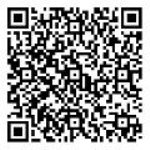期刊目錄列表 - 54卷(2009) - 【教育科學研究期刊】54(4) 十二月刊
 Directory
Directory
擴散性思考與聚斂性思考的交會:有限解答之擴散性思考測驗之編製與信效度檢驗
作者:陳學志(國立臺灣師範大學教育心理與輔導學系)、洪素蘋(國立臺灣師範大學教育心理與輔導學系)、許禕芳(國立臺灣師範大學教育心理與輔導學系)、邱皓政(國立中央大學企業管理學系)、關秉寅(國立政治大學社會學系)、詹志禹(國立政治大學教育學系)
卷期:54卷第4期
日期:2009年12月
頁碼:29-61
DOI:10.3966/2073753X2009125404002
摘要:
本研究旨在編擬一套適用於臺灣高中職學生的創造認知能力測量工具。測驗的建置,融合擴散性思考與頓悟性思考兩種客觀測量工具的優勢並改善其缺失,同時利用中文方塊字富有變化的有限集合特性,編製「有限解答之擴散性思考測驗」。測驗內容要求學生在某中文字(例如「里」字)上,進行部分筆畫的刪減,以拆解出其他合法的中文字。依據學生作答反應的個數、類別與新奇性,分別評定其流暢力、變通力與獨創力。其優點:一、評量兼顧新奇性與適切性;二、評分簡便且指標多元。本研究以北臺灣地區的高中職學生為母群體進行抽樣與施測,取得效標關聯效度證據。最後,以1,200 位高中職學生為樣本建立測驗的獨創性常模,提供後續研究者一套合宜的評量工具。
關鍵詞:創造認知能力測量、頓悟性思考、頓悟性問題、擴散性思考
 《詳全文》
《詳全文》

| 中文APA引文格式 | 陳學志、洪素蘋、許禕芳、邱皓政、關秉寅、詹志禹(2009)。散性思考與聚斂性思考的交會:有限解答之擴散性思考測驗之編製與信效度檢驗。教育科學研究期刊,54(4),29-61。doi:10.3966/2073753X2009125404002 |
|---|
| APA Format | Chen, S.-C., Hung, S.-P., Hsu, Y.-F., Chiou, H.-J., Kuan, P.-Y., & Chan, C.-Y. (2009). The Connection of Divergent Thinking and Convergent Thinking: Developing of Constrained Divergent Thinking Test and Examining Reliability and Validity. Journal of Research in Education Sciences, 54(4), 29-61. doi:10.3966/2073753X2009125404002 |
|---|
Journal directory listing - Volume 54 (2009) - Journal of Research in Education Sciences【54(4)】December
 Directory
Directory
The Connection of Divergent Thinking and Convergent Thinking: Developing of Constrained Divergent Thinking Test and Examining Reliability and Validity
Author: Hsueh-Chin Chen(Department of Education Psychologyand Counseling,National Taiwan Normal University),Su-Pin Hung(Department of Education Psychologyand Counseling,National Taiwan Normal University),Yi-Fang Hsu(Department of Education Psychologyand Counseling,National Taiwan Normal University),Haw-Jeng Chiou(Department of Business Administration,National Central University),Ping-Yin Kuan(Department of Sociology, National Chengchi University),Chih-Yu Chan(Department of Education, National Chengchi University)
Vol.&No.:Vol. 54, No. 4
Date:December 2009
Pages:29-61
DOI:10.3966/2073753X2009125404002
Abstract:
The purpose of this study was to develop a measure of creative cognition which would enable educators to more accurately and objectively measure the development of creativity in Taiwanese high school students. The instrument was designed to measure the constructs of divergent-thinking and insight, as previous research has suggested that these are the only two dimensions of creativity which can be measured objectively. To overcome problems encountered in previous attempts to measure these two abilities, and to combine the strengths of separate measures of both, a test was developed which involves having students subtract strokes from the Chinese characters “里” to form another legal Chinese character. Responses are scored for fluency (the number of legal responses), flexibility (the variety of perspectives represented in the responses), and originality (statistical infrequency). The stroke-subtraction test offers advantages compared to other measures of creativity in that it emphasizes the novelty and appropriateness of the responses simultaneously. Further, use of the three score indexes simplifies the scoring process. The test was piloted with 1,200 Taiwanese high school students, and this sample was used to establish a norm for the purpose of norm-referenced score interpretations. The results were also compared with those from several other measurements to provide evidence supporting the criterion-related validity of the instrument. Based on the findings, implications for educational administrators, schools, teachers are discussed. Finally, suggestions for future research are offered.
Keywords:cognitive measure of creativity, insight, insight problems, divergent thinking